Top Crypto Trading Platforms in 2025







%201.svg)
%201.svg)
Big news: We’re cranking up the heat on AI-driven crypto analytics with the launch of the Token Metrics API and our official SDK (Software Development Kit). This isn’t just an upgrade – it's a quantum leap, giving traders, hedge funds, developers, and institutions direct access to cutting-edge market intelligence, trading signals, and predictive analytics.
Crypto markets move fast, and having real-time, AI-powered insights can be the difference between catching the next big trend or getting left behind. Until now, traders and quants have been wrestling with scattered data, delayed reporting, and a lack of truly predictive analytics. Not anymore.
The Token Metrics API delivers 32+ high-performance endpoints packed with powerful AI-driven insights right into your lap, including:
Getting started with the Token Metrics API is simple:
At Token Metrics, we believe data should be decentralized, predictive, and actionable.
The Token Metrics API & SDK bring next-gen AI-powered crypto intelligence to anyone looking to trade smarter, build better, and stay ahead of the curve. With our official SDK, developers can plug these insights into their own trading bots, dashboards, and research tools – no need to reinvent the wheel.
%201.svg)
%201.svg)
The cryptocurrency market has evolved dramatically, transforming from a speculative playground into a sophisticated ecosystem requiring strategic thinking and data-driven approaches. For investors looking to maximize returns with a $10,000 budget, understanding the right methodology can mean the difference between modest gains and life-changing wealth.
Successful crypto trading begins with understanding market cycles and timing. The most critical tool in any trader's arsenal is the Token Metrics market indicator – a comprehensive gauge that tells you when to be aggressive versus when to exercise caution.
When the Token Metrics market indicator shows "strong buy" with gaining momentum, it's time to operate at full throttle. Conversely, during "sell" or "strong sell" periods, conservative positioning protects capital for future opportunities. This simple principle has helped countless investors avoid the devastating losses that plague emotional traders.
"Everything starts with the market indicator. This kind of tells you how aggressive to be with your trades," explains Token Matrix's Ian Belina, emphasizing that successful trading requires adapting intensity to market conditions rather than maintaining constant aggression.
Perhaps the most overlooked yet powerful tool for profit maximization is the Bitcoin vs Altcoin Season indicator. This metric reveals when over 60% of market returns shift to altcoins – a historically reliable signal for taking profits.
Historical data shows this indicator preceded major market tops with remarkable accuracy. In December 2024, when altcoins captured nearly 60% of returns, the market peaked within days. Similarly, the January peak occurred precisely when this metric flashed warning signs.
Smart traders use this as a systematic profit-taking trigger. When altcoin returns exceed 60% while the overall market shows strong bullish signals, it's time to take 25-50% off the table, regardless of individual token performance.
Rather than scouring thousands of cryptocurrencies, successful traders focus on a curated list of trending tokens with high trader grades (80%+). This approach filters market noise and identifies where institutional money and sophisticated algorithms are placing bets.
The trending tokens methodology works because it combines:
Current examples demonstrating this strategy's power include:
Chainlink has broken through multi-year resistance at $22-$23, positioning for a potential run toward $37. The enterprise Layer 1 narrative drives this momentum as Wall Street firms launching blockchain infrastructure require robust oracle services. With improved tokenomics and a revenue-tied buyback program, Chainlink represents a "blue chip" crypto with institutional staying power.
Despite already delivering 100% returns in 30 days, Bio Protocol continues showing strength due to backing from Binance Labs and recent $1 million investment from notable crypto figure and Bitmex founder Arthur Hayes. The DeSci (Decentralized Science) narrative provides fundamental support for continued growth.
Trading at what analysts consider deeply undervalued levels, Pendle operates with $10 billion in Total Value Locked against just a $1.4 billion market cap. As institutions seek yield optimization tools, Pendle's unique position in yield tokenization and trading presents significant upside potential.
Successful crypto investors understand that markets are driven by narratives – compelling stories that capture investor imagination and drive capital flows. Current dominant narratives include:
Coinbase's gradual rollout of DEX trading functionality (currently available to just 1% of users) creates a massive catalyst for Base ecosystem tokens. Aerodrome, serving as the primary DEX aggregator, and Zora, providing social Web3 functionality, both benefit from this expanding user base.
Following the success of tokens like AIXBT (which delivered 17x returns during peak AI agent season), smart traders monitor for the next wave of AI-focused projects. However, timing remains crucial – entering established trends often leads to disappointment.
With SEC leadership changes bringing crypto-friendly policies, tokens positioned to benefit from clearer regulations command premium valuations. Stablecoin protocols and institutional DeFi platforms lead this category.
Professional crypto traders never go "all-in" on any single opportunity. The optimal approach involves:
This diversification ensures portfolio survival during inevitable corrections while maintaining upside exposure to breakout performances.
Phase 1: Market Assessment (Days 1-7)
Phase 2: Initial Deployment (Days 8-30)
Phase 3: Active Management (Ongoing)
Recent analysis suggests the current crypto cycle may extend into 2026, following historical patterns where each cycle lasts approximately 25% longer than its predecessor. This extended timeline provides multiple opportunities for strategic repositioning and compound growth.
With total crypto market cap at $4 trillion (compared to the previous cycle peak of $3 trillion), significant upside remains. Investors positioning correctly for this extended cycle could see their $10,000 investments grow substantially.

Emotional Trading: Following social media hype instead of data-driven signals leads to buying tops and selling bottoms.
Overconcentration: Putting too much capital in a single token, regardless of conviction level.
Ignoring Market Cycles: Failing to adjust strategy based on overall market conditions.
Chasing Past Performance: Buying tokens after they've already completed major moves.
The future of crypto trading lies in automation. Token Matrix and similar platforms are developing automated indices that can:
These tools democratize access to institutional-grade trading strategies, potentially transforming modest investments into significant wealth over time.
Turning $10,000 into life-changing wealth in crypto requires discipline, patience, and systematic execution. By focusing on market timing, following trending narratives, and maintaining strict risk management, investors position themselves for outsized returns while protecting against catastrophic losses.
The key lies not in finding the next 100x token, but in consistently identifying and properly timing 2-5x opportunities across multiple market cycles. With the right approach, compound growth and strategic reinvestment can transform modest beginnings into substantial wealth.
Remember: in crypto, survival is the first priority, profit is the second, and extraordinary gains come to those who master both.
%201.svg)
%201.svg)
The cryptocurrency industry is witnessing a paradigm shift as major exchanges race to build comprehensive "super apps" that consolidate trading, social features, and DeFi into single platforms. Leading this revolution is Coinbase's Base app, a ambitious project that could redefine how users interact with crypto.
The Base app represents Coinbase's vision of a crypto "everything app" – think WeChat for the blockchain era. Built on Coinbase's Layer 2 solution, Base, this platform integrates multiple crypto functions into one seamless experience:
1. Centralized & Decentralized Trading
2. Social Creator Economy
3. Mini App Ecosystem
4. Integrated Payments
Farcaster serves as the technical backbone for the Base app's social and mini-app functionality. As a decentralized social networking protocol built on Ethereum, Farcaster enables:
The Base app ecosystem presents significant opportunities for developers:
Mini App Development:
Success Stories:
Multiple major exchanges are pursuing similar strategies:
Coinbase (Base):
OKX (X Layer):
Binance (BNB Chain):
Kraken (Inc L2):
The exchange blokchain trend is driving significant value creation:
BNB Example:
Implications for Coinbase:
1. Regulatory Clarity
2. User Experience Focus
3. Ecosystem Integration
4. Developer Support
The Base app is designed to create powerful network effects:
Aerodrome (AERO):
Farcaster Ecosystem:
Zora (ZORA):
Base Ecosystem Tokens:
Scalability Concerns:
Competition Intensity:
Token Launch Uncertainty:
International Expansion:
Narrative Rotation:
The success of super apps could fundamentally change crypto:
User Behavior:
Developer Economics:
Market Structure:
Crypto super apps pose a direct threat to:
Current Status: Limited beta with waitlist Access Methods:
Preparation Steps:
Opportunity Windows:
The Base app represents more than just another crypto platform – it's a bet on the future of digital interaction. Success could establish Coinbase as the dominant force in crypto user experience, while failure could cede ground to more agile competitors.
User Adoption:
Developer Ecosystem:
Market Performance:
The Coinbase Base app represents a potentially transformative moment in crypto infrastructure. By combining social features, trading capabilities, and developer tools into a single platform, it could become the primary gateway for mainstream crypto adoption.
For investors and developers, the opportunity lies not just in the Base app itself, but in the entire ecosystem it's creating. Early positioning in Base-native projects, particularly those with lower market caps and strong integration potential, could yield significant returns as the platform scales.
However, success is far from guaranteed. The competitive landscape is intense, regulatory challenges remain, and crypto market narratives shift rapidly. The winners will be those who can execute flawlessly while adapting to changing market conditions.
The race for the crypto super app is just beginning – and the Base app has taken an early lead.
Stay ahead of crypto infrastructure trends. The platforms that win user mindshare today will shape the industry's future tomorrow.
%201.svg)
%201.svg)
The cryptocurrency market is experiencing a significant narrative shift, with Ethereum and Base ecosystem projects leading the charge in early 2025. Recent market analysis reveals a concentrated rally in ETH-related tokens, presenting both opportunities and risks for crypto traders.
The crypto market has entered what experts are calling "Ethereum season," with ETH positioning itself as the number two highest-rated token in terms of trader grade. This surge isn't coincidental – it's driven by several key factors:
Major corporations are increasingly adding Ethereum to their treasury holdings, following the path Bitcoin paved. This institutional adoption has created sustained buying pressure, with Ethereum benefiting from the same "digital gold" narrative that propelled Bitcoin to new heights.
Coinbase's Layer 2 solution, Base, has become the most relevant L2 network, overtaking Arbitrum's previous dominance. The recent rebranding of Coinbase Wallet to the "Base app" has created a powerful ecosystem effect, benefiting projects deeply integrated with Base infrastructure.
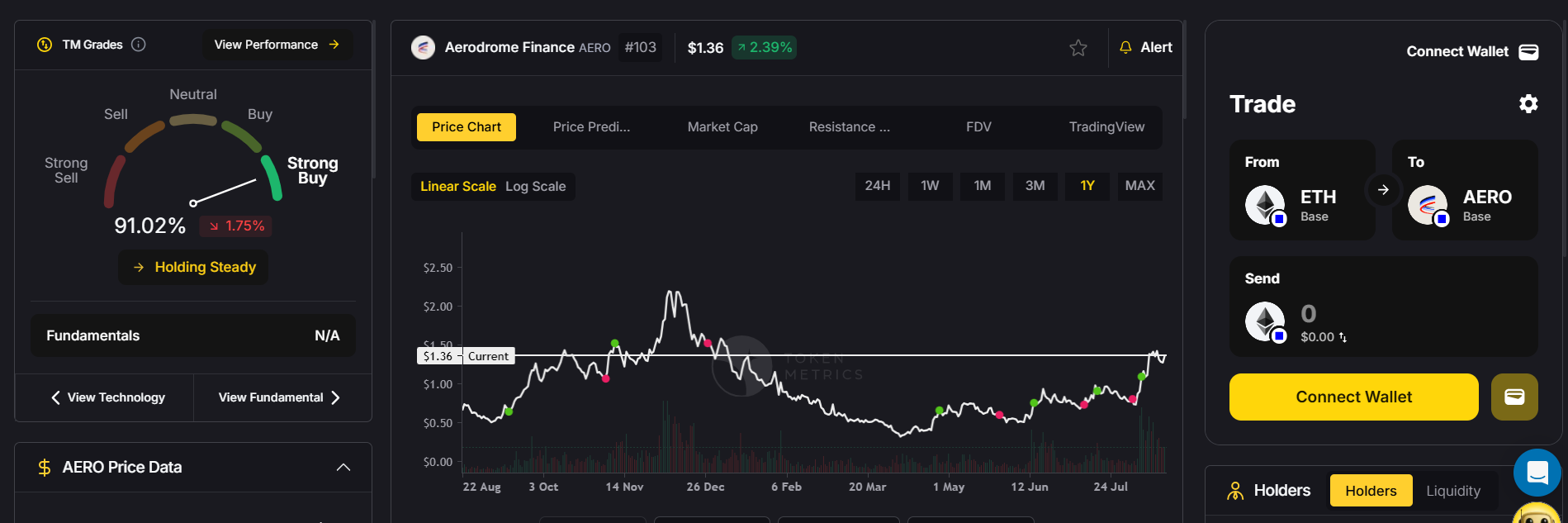
Current Market Cap: $1.2 billion
FDV: $2.3 billion
Aerodrome has emerged as the go-to liquidity solution for the Base ecosystem. With its tight integration into Coinbase's Base app ecosystem, AERO has significant upside potential as the Base app remains in limited beta. Once full access opens to Coinbase's broader user base, liquidity demand could skyrocket.
Key Advantages:

Current Market Cap: Under $1 billion
FDV: $1.6 billion
Pendle is positioning itself as essential DeFi infrastructure, often compared to the "new Aave." The project has attracted significant institutional investment and offers unique yield trading mechanisms that differentiate it from traditional lending protocols.
Growth Drivers:

Current Market Cap: $2.3 billion
FDV: $11.6 billion
Ethena has created a revolutionary synthetic stablecoin (USDe) that generates yield through delta-neutral trading strategies. The protocol has achieved remarkable growth, reaching 10 billion in stablecoin supply faster than both USDC and Tether historically.
Unique Features:
The current market requires a narrative-focused trading strategy rather than pure fundamental analysis. Here's why:
The crypto market has become increasingly trader-oriented, with attention shifting between sectors rapidly. Projects with strong fundamentals can underperform if they're not part of the current narrative cycle.
Previous cycles show clear rotation patterns:
Smart traders are:
Coinbase's strategic moves are creating a "super app" ecosystem similar to WeChat but built on crypto rails:
Other exchanges are following suit:
History shows that even blue-chip projects can decline 85-90% when narratives shift. AI tokens like AXBT fell from $0.80 to $0.13 despite strong fundamentals.
The Ethereum/Base narrative may be reaching maturity. Smart money is:
Successful traders are implementing:
Smart traders are already positioning for potential rotations into:
The Ethereum and Base ecosystem rally presents compelling short-term opportunities, but requires disciplined execution and risk management. Focus on projects with strong narrative alignment, lower valuations relative to peers, and clear catalysts for continued growth.
Remember: in the current market environment, being right about fundamentals isn't enough – you need to be right about narrative timing. Stay flexible, use alerts effectively, and be prepared to rotate when the market's attention shifts.
The crypto market moves fast. Stay informed with real-time analysis and trading signals to maximize your opportunities while managing risk effectively.

%201.svg)
%201.svg)
The cryptocurrency market has officially shifted into risk-off mode, marking a significant change from the bullish momentum we've witnessed over recent months. According to leading crypto analysts from Token Matrics, while the overall market indicator shows "neutral," the underlying momentum has been declining dramatically – a pattern that demands immediate attention from investors.
Bitcoin, currently trading around $114,000, has experienced what analysts describe as "momentum crashing." Despite reaching an all-time high of $124,000 just last week, the world's largest cryptocurrency has retreated below $115,000, triggering a clear sell signal on technical indicators.
This dramatic shift becomes even more apparent when examining the Bitcoin vs Altcoin Season indicator. From July 10th, when 90% of returns were concentrated in Bitcoin during its price discovery phase, the market briefly shifted to an even split between Bitcoin and altcoin returns. However, we're now witnessing a return to Bitcoin dominance – a classic sign of risk-off sentiment among crypto investors.
"I think this is just probably a healthy cooling-off correction. I don't think this is the end per se," explains Ian Belina, highlighting that while the current pullback appears significant, it may represent a necessary market reset rather than a trend reversal.
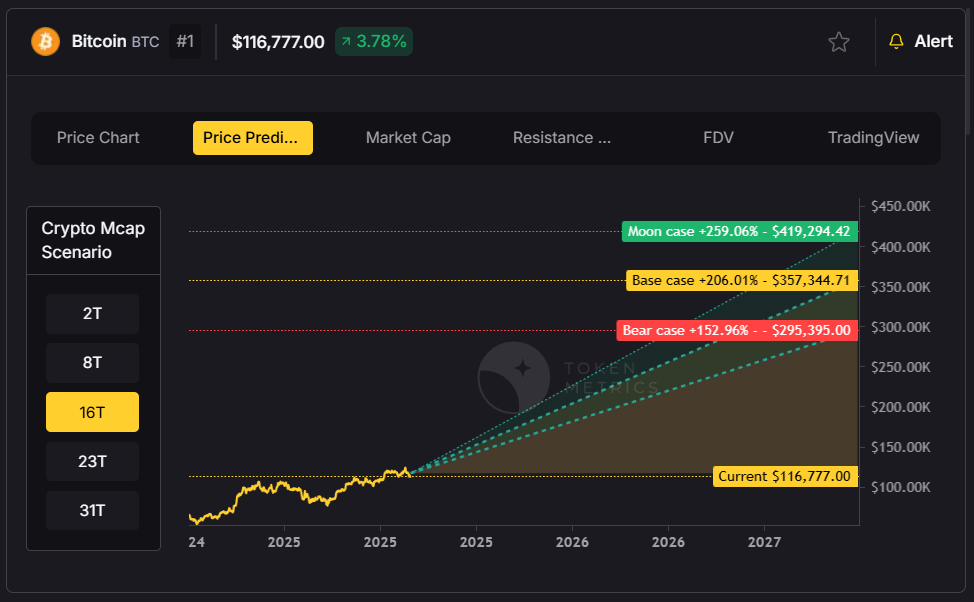
While Bitcoin struggles with declining momentum, Ethereum has emerged as the standout performer, demonstrating remarkable resilience in the current market environment. Trading around $4,300, Ethereum has surged approximately 70% since June, vastly outperforming Bitcoin's modest 9-10% gains over the same period.
The ETH/BTC ratio has climbed to 2025 highs at 0.037%, signaling a significant shift in investor preference toward Ethereum-based assets. This performance is particularly noteworthy given the regulatory clarity emerging in the United States, which has created favorable conditions for stablecoin protocols and crypto treasury adoption.
Abdullah, Head of Research & Investments at Token Matrics, remains bullish on Ethereum's prospects: "As long as ETH is above 4k, I think ETH holders shouldn't be worried. Ethereum will keep outperforming Bitcoin and Solana within the next one to three months."
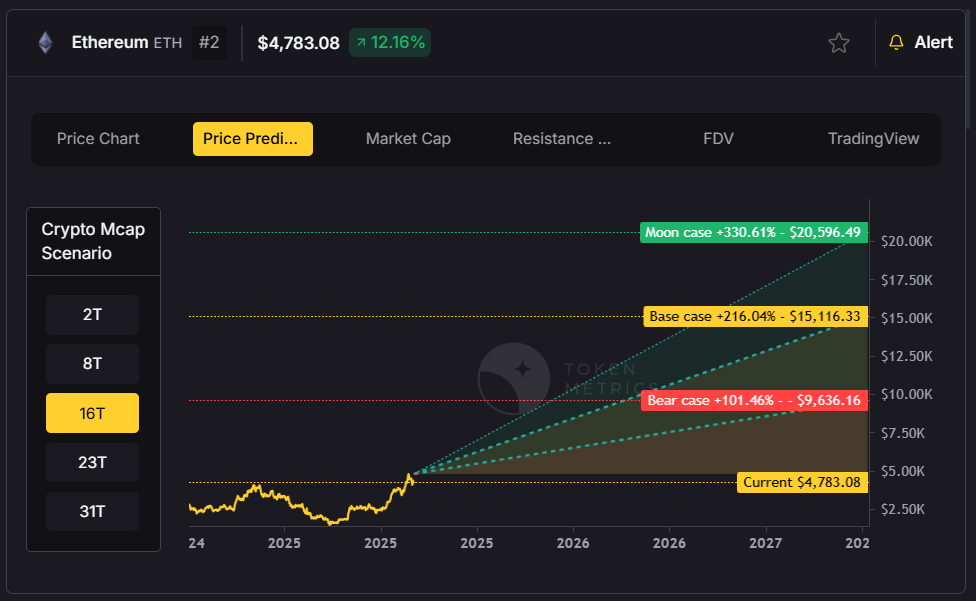
Solana presents a more concerning picture, with analysts expecting a potential capitulation event that could see the token decline 30-40% from current levels. Having broken major technical support levels, Solana's momentum indicators have turned decidedly bearish.
However, this bearish outlook comes with a silver lining for long-term investors. "I think it will be a purely buy the dip opportunity before Solana starts to run again for $500 or maybe $1,000 by the end of the cycle," notes Abdullah, suggesting that current weakness may present attractive entry points for patient investors.
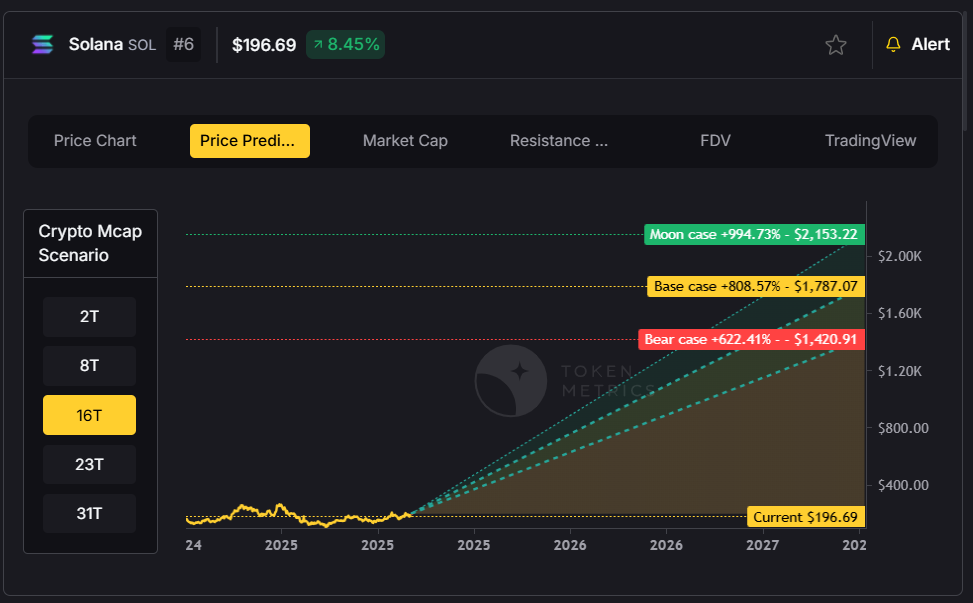
A major catalyst supporting the crypto market's long-term outlook is the continued accumulation by corporate treasuries. MicroStrategy recently purchased an additional 430 Bitcoin for $51 million, bringing its total holdings to approximately $7.2 billion with unrealized gains of $2.6 billion.
The trend extends beyond Bitcoin, with Ethereum treasuries gaining significant momentum. Bitcoin Immersion, led by Tom Lee, has acquired 1.52 million ETH valued at $6.6 billion, making it the second-largest public crypto treasury behind MicroStrategy and the largest for Ethereum specifically.
These institutional moves represent more than mere speculation – they signal a fundamental shift toward crypto as a legitimate treasury asset. As of now, 4% of Bitcoin's supply and 2% of Ethereum's supply is held by public companies and treasury entities.
Despite the overall bearish sentiment, several tokens continue to show strength and present compelling trading opportunities:
Chainlink has emerged as a standout performer, recently breaking through the $22-$23 resistance level that had acted as a range high for over two years. The enterprise L1 narrative is driving adoption, as Wall Street-backed firms launching their own Layer 1 blockchains require reliable oracle services.
"I think it's only a matter of time till Chainlink sees a new all-time high," predicts Abdullah, citing the protocol's dominant market position and recent tokenomics improvements, including a buyback program tied to enterprise revenue.

Despite being undervalued relative to its fundamentals, Pendle continues to show strength with a Total Value Locked (TVL) of approximately $10 billion against a market cap of only $1.4 billion. As the leading yield trading platform, Pendle offers institutional investors the ability to fix yields and trade funding rates with leverage.
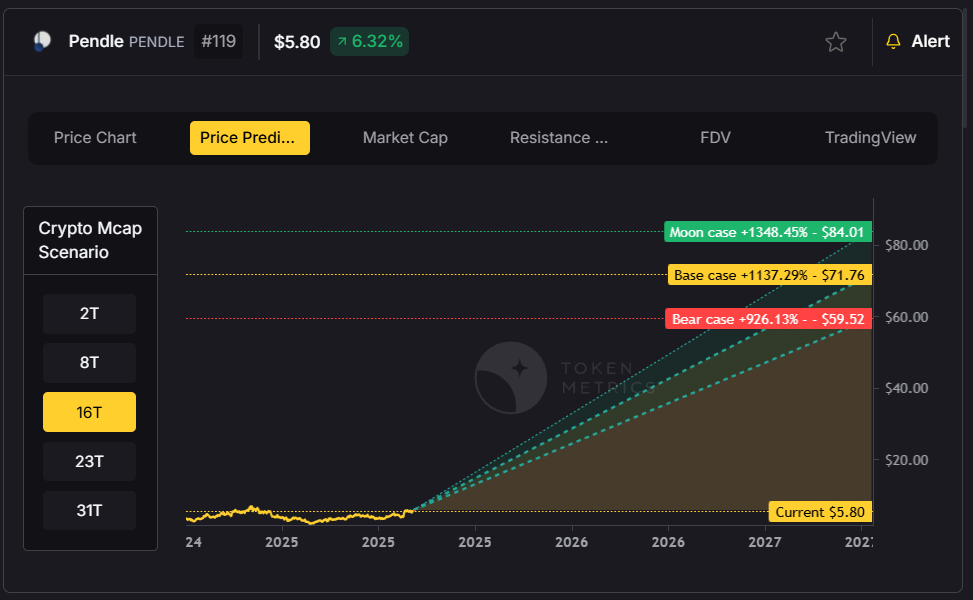
Tokens within the Base ecosystem, including Aerodrome and Zora, have shown resilience despite recent corrections. With Coinbase planning to expand DEX trading access beyond the current 1% of users, these protocols could see significant volume increases.
Looking ahead, analysts expect a consolidation or correction period lasting several weeks into mid-to-late September. However, Q4 remains positioned for potential bullish momentum, particularly if the Federal Reserve delivers dovish commentary at the upcoming Jackson Hole speech.
The key for investors lies in monitoring critical indicators: the market sentiment gauge, Bitcoin vs Altcoin season metrics, and individual token momentum scores. When over 60% of market returns shift to altcoins while the overall market shows strong buy signals, it typically indicates an optimal profit-taking opportunity.
For those navigating this complex environment, focusing on tokens with strong fundamentals, high trader grades (80%+), and positive momentum indicators remains the most prudent approach. While the current market presents challenges, it also offers opportunities for those who can correctly identify and time the strongest performers in each narrative cycle.
The crypto market's evolution continues, and while short-term volatility is inevitable, the underlying infrastructure and institutional adoption trends suggest a maturing asset class with significant long-term potential.

%201.svg)
%201.svg)
The cryptocurrency market has evolved dramatically, transforming from a speculative playground into a sophisticated ecosystem requiring strategic thinking and data-driven approaches. For investors looking to maximize returns with a $10,000 budget, understanding the right methodology can mean the difference between modest gains and life-changing wealth.
Successful crypto trading begins with understanding market cycles and timing. The most critical tool in any trader's arsenal is the Token Metrics market indicator – a comprehensive gauge that tells you when to be aggressive versus when to exercise caution.
When the Token Metrics market indicator shows "strong buy" with gaining momentum, it's time to operate at full throttle. Conversely, during "sell" or "strong sell" periods, conservative positioning protects capital for future opportunities. This simple principle has helped countless investors avoid the devastating losses that plague emotional traders.
"Everything starts with the market indicator. This kind of tells you how aggressive to be with your trades," explains Token Matrix's Ian Belina, emphasizing that successful trading requires adapting intensity to market conditions rather than maintaining constant aggression.
Perhaps the most overlooked yet powerful tool for profit maximization is the Bitcoin vs Altcoin Season indicator. This metric reveals when over 60% of market returns shift to altcoins – a historically reliable signal for taking profits.
Historical data shows this indicator preceded major market tops with remarkable accuracy. In December 2024, when altcoins captured nearly 60% of returns, the market peaked within days. Similarly, the January peak occurred precisely when this metric flashed warning signs.
Smart traders use this as a systematic profit-taking trigger. When altcoin returns exceed 60% while the overall market shows strong bullish signals, it's time to take 25-50% off the table, regardless of individual token performance.
Rather than scouring thousands of cryptocurrencies, successful traders focus on a curated list of trending tokens with high trader grades (80%+). This approach filters market noise and identifies where institutional money and sophisticated algorithms are placing bets.
The trending tokens methodology works because it combines:
Current examples demonstrating this strategy's power include:
Chainlink has broken through multi-year resistance at $22-$23, positioning for a potential run toward $37. The enterprise Layer 1 narrative drives this momentum as Wall Street firms launching blockchain infrastructure require robust oracle services. With improved tokenomics and a revenue-tied buyback program, Chainlink represents a "blue chip" crypto with institutional staying power.
Despite already delivering 100% returns in 30 days, Bio Protocol continues showing strength due to backing from Binance Labs and recent $1 million investment from notable crypto figure and Bitmex founder Arthur Hayes. The DeSci (Decentralized Science) narrative provides fundamental support for continued growth.
Trading at what analysts consider deeply undervalued levels, Pendle operates with $10 billion in Total Value Locked against just a $1.4 billion market cap. As institutions seek yield optimization tools, Pendle's unique position in yield tokenization and trading presents significant upside potential.
Successful crypto investors understand that markets are driven by narratives – compelling stories that capture investor imagination and drive capital flows. Current dominant narratives include:
Coinbase's gradual rollout of DEX trading functionality (currently available to just 1% of users) creates a massive catalyst for Base ecosystem tokens. Aerodrome, serving as the primary DEX aggregator, and Zora, providing social Web3 functionality, both benefit from this expanding user base.
Following the success of tokens like AIXBT (which delivered 17x returns during peak AI agent season), smart traders monitor for the next wave of AI-focused projects. However, timing remains crucial – entering established trends often leads to disappointment.
With SEC leadership changes bringing crypto-friendly policies, tokens positioned to benefit from clearer regulations command premium valuations. Stablecoin protocols and institutional DeFi platforms lead this category.
Professional crypto traders never go "all-in" on any single opportunity. The optimal approach involves:
This diversification ensures portfolio survival during inevitable corrections while maintaining upside exposure to breakout performances.
Phase 1: Market Assessment (Days 1-7)
Phase 2: Initial Deployment (Days 8-30)
Phase 3: Active Management (Ongoing)
Recent analysis suggests the current crypto cycle may extend into 2026, following historical patterns where each cycle lasts approximately 25% longer than its predecessor. This extended timeline provides multiple opportunities for strategic repositioning and compound growth.
With total crypto market cap at $4 trillion (compared to the previous cycle peak of $3 trillion), significant upside remains. Investors positioning correctly for this extended cycle could see their $10,000 investments grow substantially.

Emotional Trading: Following social media hype instead of data-driven signals leads to buying tops and selling bottoms.
Overconcentration: Putting too much capital in a single token, regardless of conviction level.
Ignoring Market Cycles: Failing to adjust strategy based on overall market conditions.
Chasing Past Performance: Buying tokens after they've already completed major moves.
The future of crypto trading lies in automation. Token Matrix and similar platforms are developing automated indices that can:
These tools democratize access to institutional-grade trading strategies, potentially transforming modest investments into significant wealth over time.
Turning $10,000 into life-changing wealth in crypto requires discipline, patience, and systematic execution. By focusing on market timing, following trending narratives, and maintaining strict risk management, investors position themselves for outsized returns while protecting against catastrophic losses.
The key lies not in finding the next 100x token, but in consistently identifying and properly timing 2-5x opportunities across multiple market cycles. With the right approach, compound growth and strategic reinvestment can transform modest beginnings into substantial wealth.
Remember: in crypto, survival is the first priority, profit is the second, and extraordinary gains come to those who master both.

%201.svg)
%201.svg)
The cryptocurrency industry is witnessing a paradigm shift as major exchanges race to build comprehensive "super apps" that consolidate trading, social features, and DeFi into single platforms. Leading this revolution is Coinbase's Base app, a ambitious project that could redefine how users interact with crypto.
The Base app represents Coinbase's vision of a crypto "everything app" – think WeChat for the blockchain era. Built on Coinbase's Layer 2 solution, Base, this platform integrates multiple crypto functions into one seamless experience:
1. Centralized & Decentralized Trading
2. Social Creator Economy
3. Mini App Ecosystem
4. Integrated Payments
Farcaster serves as the technical backbone for the Base app's social and mini-app functionality. As a decentralized social networking protocol built on Ethereum, Farcaster enables:
The Base app ecosystem presents significant opportunities for developers:
Mini App Development:
Success Stories:
Multiple major exchanges are pursuing similar strategies:
Coinbase (Base):
OKX (X Layer):
Binance (BNB Chain):
Kraken (Inc L2):
The exchange blokchain trend is driving significant value creation:
BNB Example:
Implications for Coinbase:
1. Regulatory Clarity
2. User Experience Focus
3. Ecosystem Integration
4. Developer Support
The Base app is designed to create powerful network effects:
Aerodrome (AERO):
Farcaster Ecosystem:
Zora (ZORA):
Base Ecosystem Tokens:
Scalability Concerns:
Competition Intensity:
Token Launch Uncertainty:
International Expansion:
Narrative Rotation:
The success of super apps could fundamentally change crypto:
User Behavior:
Developer Economics:
Market Structure:
Crypto super apps pose a direct threat to:
Current Status: Limited beta with waitlist Access Methods:
Preparation Steps:
Opportunity Windows:
The Base app represents more than just another crypto platform – it's a bet on the future of digital interaction. Success could establish Coinbase as the dominant force in crypto user experience, while failure could cede ground to more agile competitors.
User Adoption:
Developer Ecosystem:
Market Performance:
The Coinbase Base app represents a potentially transformative moment in crypto infrastructure. By combining social features, trading capabilities, and developer tools into a single platform, it could become the primary gateway for mainstream crypto adoption.
For investors and developers, the opportunity lies not just in the Base app itself, but in the entire ecosystem it's creating. Early positioning in Base-native projects, particularly those with lower market caps and strong integration potential, could yield significant returns as the platform scales.
However, success is far from guaranteed. The competitive landscape is intense, regulatory challenges remain, and crypto market narratives shift rapidly. The winners will be those who can execute flawlessly while adapting to changing market conditions.
The race for the crypto super app is just beginning – and the Base app has taken an early lead.
Stay ahead of crypto infrastructure trends. The platforms that win user mindshare today will shape the industry's future tomorrow.
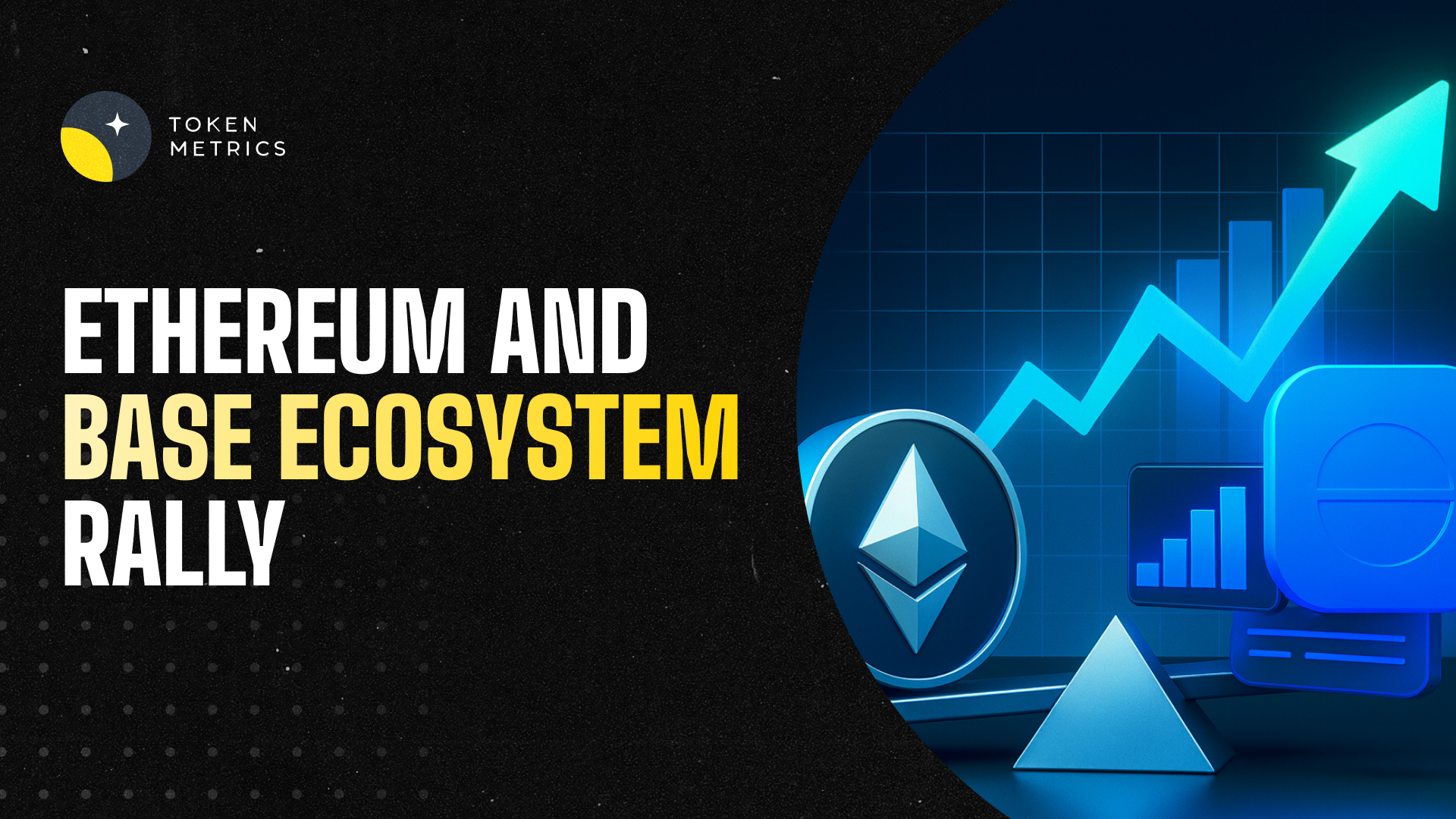
%201.svg)
%201.svg)
The cryptocurrency market is experiencing a significant narrative shift, with Ethereum and Base ecosystem projects leading the charge in early 2025. Recent market analysis reveals a concentrated rally in ETH-related tokens, presenting both opportunities and risks for crypto traders.
The crypto market has entered what experts are calling "Ethereum season," with ETH positioning itself as the number two highest-rated token in terms of trader grade. This surge isn't coincidental – it's driven by several key factors:
Major corporations are increasingly adding Ethereum to their treasury holdings, following the path Bitcoin paved. This institutional adoption has created sustained buying pressure, with Ethereum benefiting from the same "digital gold" narrative that propelled Bitcoin to new heights.
Coinbase's Layer 2 solution, Base, has become the most relevant L2 network, overtaking Arbitrum's previous dominance. The recent rebranding of Coinbase Wallet to the "Base app" has created a powerful ecosystem effect, benefiting projects deeply integrated with Base infrastructure.

Current Market Cap: $1.2 billion
FDV: $2.3 billion
Aerodrome has emerged as the go-to liquidity solution for the Base ecosystem. With its tight integration into Coinbase's Base app ecosystem, AERO has significant upside potential as the Base app remains in limited beta. Once full access opens to Coinbase's broader user base, liquidity demand could skyrocket.
Key Advantages:

Current Market Cap: Under $1 billion
FDV: $1.6 billion
Pendle is positioning itself as essential DeFi infrastructure, often compared to the "new Aave." The project has attracted significant institutional investment and offers unique yield trading mechanisms that differentiate it from traditional lending protocols.
Growth Drivers:

Current Market Cap: $2.3 billion
FDV: $11.6 billion
Ethena has created a revolutionary synthetic stablecoin (USDe) that generates yield through delta-neutral trading strategies. The protocol has achieved remarkable growth, reaching 10 billion in stablecoin supply faster than both USDC and Tether historically.
Unique Features:
The current market requires a narrative-focused trading strategy rather than pure fundamental analysis. Here's why:
The crypto market has become increasingly trader-oriented, with attention shifting between sectors rapidly. Projects with strong fundamentals can underperform if they're not part of the current narrative cycle.
Previous cycles show clear rotation patterns:
Smart traders are:
Coinbase's strategic moves are creating a "super app" ecosystem similar to WeChat but built on crypto rails:
Other exchanges are following suit:
History shows that even blue-chip projects can decline 85-90% when narratives shift. AI tokens like AXBT fell from $0.80 to $0.13 despite strong fundamentals.
The Ethereum/Base narrative may be reaching maturity. Smart money is:
Successful traders are implementing:
Smart traders are already positioning for potential rotations into:
The Ethereum and Base ecosystem rally presents compelling short-term opportunities, but requires disciplined execution and risk management. Focus on projects with strong narrative alignment, lower valuations relative to peers, and clear catalysts for continued growth.
Remember: in the current market environment, being right about fundamentals isn't enough – you need to be right about narrative timing. Stay flexible, use alerts effectively, and be prepared to rotate when the market's attention shifts.
The crypto market moves fast. Stay informed with real-time analysis and trading signals to maximize your opportunities while managing risk effectively.

%201.svg)
%201.svg)
As crypto trading automation accelerates into 2025, choosing the right API interface for your bot could be the critical difference between lagging behind or capitalizing on real-time opportunities. But when it comes to REST vs WebSocket crypto APIs, which technology should you select for power, reliability, and performance? This post details the core differences, essential trade-offs, and latest best practices for crypto API comparison, empowering you to make a technical, mission-aligned decision for your next-generation trading bot.
To understand which API protocol is optimal for your crypto bot in 2025, let’s clarify what REST and WebSocket actually do—especially in a high-frequency, automation-driven ecosystem.
The fundamental contrast: REST works in a "pull" model (request/response), while WebSockets operate in a "push" paradigm (real-time streams). This distinction plays a major role in how bots interact with exchanges and handle crypto market shifts.
Performance and data freshness are critical for crypto APIs in 2025. High-frequency or latency-sensitive trading bots depend on receiving accurate, instant data on price movements and order book changes.
Yet reliability considerations persist. WebSocket connections may experience drops, require reconnection logic, and occasionally miss events during high network volatility. REST, while slower, may provide more consistency under unstable conditions.
Your crypto bot’s requirements—frequency of updates, types of orders, and compliance frameworks—may drive the API choice. Here’s how REST and WebSocket compare across scenarios relevant in 2025:
Security-wise, REST can offer granular access controls per endpoint. WebSockets, though encrypted, have unique session management and timeout considerations—especially important for bots managing real funds.
In the ever-evolving crypto automation landscape, developers and researchers are seeing:
Ultimately, the “better” API depends on your bot’s profile: Speed-critical, event-driven bots gravitate to WebSockets, while research bots or those trading on daily signals may remain with REST. Many leading bot frameworks in 2025 offer seamless switching or even run hybrid workflows for best-in-class resilience.
When evaluating crypto APIs for your bot or automation project, consider these practical criteria:
Above all, test API performance in real-market scenarios—using sandboxes or historical replays—to ensure your bot’s architecture is future-proofed for 2025 volatility and growth.
Build Smarter Crypto Apps & AI Agents with Token Metrics
Token Metrics provides real-time prices, trading signals, and on-chain insights all from one powerful API. Grab a Free API Key
REST APIs use isolated request/response cycles and are suited for infrequent or simple queries. WebSocket APIs sustain continuous, two-way connections for real-time market data updates. The choice depends on whether your bot needs static or streaming data.
WebSocket APIs are preferred for real-time trading bots due to their lower latency and ability to push instant data updates. However, implementation complexity and stability must be considered.
Yes. Many bots use REST for account management or trade execution and WebSocket for live data streams. This hybrid approach leverages the strengths of each protocol.
Both protocols utilize SSL encryption and API key-based authentication, but WebSocket sessions require more careful management and regular re-authentication to prevent stale or hijacked connections.
Assess your bot’s use case—speed versus reliability, frequency of queries, data intensity, and integration requirements. Testing both protocols with your trading logic is recommended for optimization.
This content is for educational and informational purposes only. It does not constitute investment, trading, or financial advice. Past performance and API platform capabilities are not guarantees of future results. Always perform independent research and technical due diligence before building or deploying trading bots or utilizing API-based automation tools.

%201.svg)
%201.svg)
Coding your first crypto trading bot can be an exciting journey into algorithmic trading, automation, and the world of digital assets. But for many beginners, the path is full of unexpected hurdles. Rushing into bot development without understanding key risks can lead to costly errors, technical failures, and frustration. In this article, we break down the top mistakes to avoid when building your first crypto trading bot, and offer actionable insights so you can start your automation journey on solid ground.
Many new developers are eager to start building a crypto trading bot after seeing success stories or reading about impressive returns from algorithmic strategies. However, skipping foundational learning can result in critical errors:
Before you start coding, invest time to learn how exchanges work, typical trading strategies, and the programming language you intend to use (often Python or JavaScript for most bot frameworks). Familiarize yourself with basic quantitative analysis and backtesting tools to ground your bot in solid logic.
One of the most widespread beginner crypto bot mistakes is failing to build robust risk controls into the automated system. While automation can remove human error and emotion, it cannot protect you from strategy-flaws or market anomalies by default. Major risks include:
Consider embedding risk-limiting features. For example, restrict order sizes to a fraction of your total balance and always code for the possibility of missed, delayed, or partially filled orders.
APIs are the backbone of any crypto trading bot, allowing programmatic access to price data, balances, and order actions. For beginners, choosing subpar or poorly documented APIs is a frequent pitfall. Key issues include:
Take time to evaluate API documentation, community support, and reliability. Explore well-maintained libraries and modules, and always use environment variables or secure vaults for your credentials.
It's tempting to deploy your trading bot live the moment it compiles without error. However, skipping backtesting—testing your bot on historical data—or forward-testing on a demo account is a recipe for unexpected behavior. Top mistakes here include:
Carefully test your strategies with a range of market conditions and environments before risking live funds. Look for open-source backtesting libraries and consider using paper trading features offered by many exchanges.
Crypto trading bots operate with sensitive account access and sometimes large balances at risk. New developers often underestimate the importance of security and regulatory compliance. Watch out for:
Implement best practices for code security and stay attentive to legal developments in your jurisdiction. Avoid shortcuts that could put your assets or reputation in danger.
Build Smarter Crypto Apps & AI Agents with Token Metrics
Token Metrics provides real-time prices, trading signals, and on-chain insights all from one powerful API. Grab a Free API Key
Most crypto trading bots are built in Python or JavaScript due to strong libraries and exchange support. Some advanced users deploy bots in Java, C#, or Go for higher performance, but Python is considered beginner-friendly.
Start with backtesting using historical data, then use exchange-provided sandboxes or paper trading environments. This lets you observe your bot’s actual behavior without risking real money or assets.
Store API keys in environment variables or encrypted vaults, restrict key permissions, and never share or publish them. Rotate keys periodically and monitor logs for unauthorized activity.
Yes; even well-tested bots can lose money due to market changes, exchange outages, slippage, or unforeseen bugs. Continuous monitoring and updates are essential for risk control.
Platforms offering real-time market data, robust APIs, and community support can help. AI-powered research tools like Token Metrics can assist with backtesting and market analysis, while open-source frameworks provide learning resources.
This article is for educational purposes only and should not be construed as investment, financial, or trading advice. Crypto trading bots carry risks, and readers should conduct thorough research and consult with professionals as appropriate. Always follow relevant laws and exchange terms of service.

%201.svg)
%201.svg)
Automating crypto trading with APIs is revolutionizing how traders and developers interact with digital asset markets. If you've ever wondered how to connect directly to exchanges like Binance and Coinbase, automate your strategies, or build your own trading bots, understanding their APIs is the crucial first step. This guide unpacks the essentials of using the Binance and Coinbase APIs for automated crypto trading—explaining the technology, potential use cases, and important considerations for getting started.
APIs, or Application Programming Interfaces, enable software to interact directly with external services. Within cryptocurrency trading, APIs provide a standardized way for users and programs to connect with exchange platforms, fetch market data, execute trades, manage portfolios, and access account information programmatically.
This seamless integration supports the development of sophisticated trading strategies, algorithmic trading bots, portfolio trackers, and research analytics. The most widely adopted crypto trading APIs are those offered by Binance and Coinbase, two of the largest global exchanges.
Binance’s API is well-documented, robust, and supports diverse endpoints for both spot and futures markets.
Popular use cases for Binance API trading include automated execution of trading signals, quantitative strategy deployment, and real-time portfolio rebalancing. The official documentation is the go-to resource for development references. Consider open-source SDKs for Python, Node.js, and other languages to streamline integration.
Coinbase provides comprehensive APIs for both its retail platform and Coinbase Advanced Trade (previously Coinbase Pro). These APIs are favored for their security and straightforward integration, especially in regulated environments.
Use the Coinbase API for automated dollar-cost averaging strategies, portfolio analytics, or to connect external research and trading tools to your account. Always apply IP whitelisting and two-factor authentication for heightened security.
While APIs empower sophisticated trading automation, several technical and strategic considerations should be addressed:
For more complex strategies, combining data from multiple APIs—including on-chain analytics and AI-powered research—can provide deeper insights and help navigate uncertain market conditions.
The real advantage of programmatic trading emerges when combining API connectivity with AI-driven analytics. Developers can harness APIs to fetch live data and feed it into machine learning models for signal generation, anomaly detection, or portfolio optimization. Tools like Python’s scikit-learn or TensorFlow—paired with real-time data from Binance, Coinbase, and third-party sources—enable dynamic strategy adjustments based on shifting market trends.
AI agents and intelligent trading bots are increasingly built to interface directly with crypto APIs, processing complex data streams to execute trades or manage risk autonomously. Such systems benefit from robust backtesting, frequent monitoring, and a modular design to ensure security and compliance with exchange requirements.
Build Smarter Crypto Apps & AI Agents with Token Metrics
Token Metrics provides real-time prices, trading signals, and on-chain insights all from one powerful API. Grab a Free API Key
Both Binance and Coinbase offer REST APIs, but Binance has broader asset coverage and advanced trading features, including futures and options support. Coinbase’s APIs prioritize security, are well-suited for U.S. users, and offer streamlined integration for both spot and advanced trade scenarios.
Python, JavaScript/Node.js, and Java are the most popular choices for building automated trading bots due to the availability of SDKs and community support. Most modern APIs are RESTful and compatible with any language that can perform HTTP requests.
Best practices include storing API keys in environment variables, never exposing them in source code repositories, limiting permissions, and regularly rotating keys. Also, use IP whitelisting and two-factor authentication if supported by the exchange.
Yes. Many advanced traders aggregate data and trade across several exchange APIs to increase liquidity access, compare prices, or diversify strategies. This often requires unifying different API schemas and handling each exchange’s unique rate limits and authentication protocols.
Automated trading can lead to unintended losses if there are bugs in the code, API changes, or sudden market movements. Proper error handling, backtesting, and initial development in sandbox/testnet environments are key risk mitigation steps.
This article is for informational and educational purposes only. It does not constitute investment advice or an offer to buy or sell any cryptocurrency. Always implement robust security practices and perform due diligence before integrating or deploying automated trading solutions.

%201.svg)
%201.svg)
Crypto trading bots have transformed how traders and analysts approach the fast-moving digital assets market. With a variety of automated strategies—like Dollar Cost Averaging (DCA), grid trading, and arbitrage—these bots help users implement consistent, rules-based tactics around the clock. But understanding how each strategy works, their strengths and limitations, and the technology that powers them is crucial for anyone looking to utilize automation in crypto trading.
Crypto trading bots are software programs designed to automate trading decisions based on predefined criteria and algorithms. These tools connect to crypto exchanges via API, executing trades according to parameters set by the user or the strategy's logic. The goal isn’t to guarantee profit, but to implement systematic, emotion-free trading practices at speed and scale impossible for humans alone.
Common features among top crypto trading bots include:
With AI and advanced analytics, bots now utilize sophisticated signals—from price action to on-chain data—to further enhance decision-making.
Dollar Cost Averaging (DCA) is a foundational investing concept, and DCA bots automate its application in the crypto markets. The DCA strategy involves purchasing a set amount of cryptocurrency at regular intervals, irrespective of price fluctuations. This method reduces exposure to volatility and removes the need to time market tops or bottoms.
A DCA bot performs these actions by connecting to your chosen crypto exchange and placing periodic orders automatically. Customizable options include:
Scenario analysis: For long-term market participants, DCA bots can smooth out entry prices during periods of high volatility, especially in trending or sideways markets. However, DCA does not prevent losses in downtrending markets and might not be optimal for short-term speculation.
Many platforms offer DCA bots, and some combine DCA with AI-driven market indicators, offering more nuanced deployment. Tools like Token Metrics provide research that can help users evaluate when and how to use DCA strategies alongside their risk management framework.
Grid trading bots are designed to profit from price oscillations within a defined range by placing a series of buy and sell orders at predetermined intervals (the "grid"). As the market moves, the bot buys low and sells high within this corridor, striving to capture profits from repeated fluctuations.
Key components of a grid trading bot:
Grid trading is best suited for markets with horizontal price movement or mild volatility. It may underperform during strong trends (up or down) as the price moves outside the set grid.
To optimize grid performance, traders often analyze historical price ranges, volatility indices, and liquidity metrics—processes where AI tools and platforms like Token Metrics can provide data-driven insights to fine-tune grid parameters.
Arbitrage is the practice of exploiting price differences of the same asset across different exchanges or markets. Arbitrage bots automate the process, rapidly identifying and capitalizing on even small price discrepancies before the market corrects itself.
There are several types of crypto arbitrage:
Arbitrage bots require:
While arbitrage opportunities exist in crypto due to market fragmentation and varying liquidity, increased competition and improved exchange efficiency have narrowed average profit margins. Bots are now often paired with on-chain analytics or machine learning models to anticipate emerging inefficiencies.
Not all strategies suit all market conditions. Choosing and optimizing a crypto trading bot strategy involves:
Advanced users often create hybrid strategies—such as combining DCA for accumulation with a grid bot for ranging periods, or adding arbitrage layers where price disparities appear. AI-based research solutions can help proactively monitor correlations, identify volatility shifts, and surface emerging patterns, providing analytical depth to trading bot strategy selection.
Before using any trading bot or automated strategy, it is essential to understand the underlying logic, risk controls, and limitations. Start with small amounts, test thoroughly, and review available documentation and analytics from trusted platforms.
Enhance Your Trading with Token Metrics
Token Metrics offers real-time prices, trading signals, and on-chain insights to help you make informed decisions. Start Trading Smarter Today
Most crypto trading bots can support major coins (Bitcoin, Ethereum) and numerous altcoins, depending on the exchanges and APIs integrated. Liquidity and exchange pairs may limit available strategies for smaller tokens.
Bots use APIs provided by exchanges to access trading accounts and execute orders automatically. API permissions usually allow for account security by limiting withdrawal capabilities to prevent misuse.
No single strategy is universally better; each suits different market conditions and goals. DCA aims to reduce volatility impact, grid bots thrive in ranging markets, and arbitrage bots seek price discrepancies across platforms.
AI can enhance trading bots by analyzing large datasets, identifying patterns, and generating trading signals based on market sentiment, technical factors, or on-chain activity. Platforms like Token Metrics integrate AI-driven analytics for more informed strategy design and monitoring.
Risks include technological errors, unexpected market volatility, slippage, API downtime, and exchange limitations. It is important to monitor bot activity, use strong security practices, and test any automated strategy before deploying significant capital.
This blog post is for informational and educational purposes only. It does not constitute investment advice, financial guidance, or a recommendation to buy or sell any asset. All strategies discussed involve risks, and past performance is not indicative of future results. Readers should conduct independent research and consult with a qualified professional before using crypto trading bots or related technologies.

%201.svg)
%201.svg)
The surge in automated crypto trading has fueled demand for robust backtesting solutions. Whether you're a developer refining an algorithm or a trader validating a new crypto trading bot strategy, reliable backtesting tools are essential. As we head into 2025, new platforms, APIs, and open-source scripts are making it easier than ever to simulate strategies before risking capital in live markets.
Backtesting allows you to simulate a trading strategy using historical market data to understand its hypothetical performance. Effective backtesting can help developers, quant traders, and crypto enthusiasts:
In fast-moving crypto markets, proper backtesting helps remove emotional bias and provides a data-driven framework for decision-making. This process is especially valuable for those employing systematic or algorithmic crypto trading bot strategies.
Choosing the right backtesting platform depends on your technical expertise, data requirements, and desired features. Here are some of the top solutions as of 2025:
When evaluating platforms, consider factors like data granularity, exchange integrations, speed, and the transparency of performance metrics.
APIs allow automated strategies to fetch accurate historical data, process live prices, and execute simulated orders. Here’s what to look for in a top-tier backtesting API in 2025:
Some of the leading APIs in 2025 for crypto bot backtesting include CoinGecko, CryptoCompare, Kaiko, and the Token Metrics API, which combines deep on-chain analysis with predictive trading signals and streamlined integration for quant developers.
Build Smarter Crypto Apps & AI Agents with Token Metrics
Token Metrics provides real-time prices, trading signals, and on-chain insights all from one powerful API. Grab a Free API Key
For those who want full control or need to extend capabilities beyond platform GUIs, open-source scripts and frameworks give maximum flexibility for research and development. Some of the noteworthy options in the crypto bot backtesting landscape include:
When selecting or building custom scripts, prioritize transparency in calculations, accuracy in data handling, and the ability to reproduce results. Open-source frameworks are ideal for researchers who want to customize every aspect of their crypto trading bot strategy testing.
The integration of AI into backtesting is rapidly changing how traders and quant researchers optimize their strategies. In 2025, many leading platforms and APIs incorporate:
AI-driven backtesting tools enable users to uncover hidden patterns and quantify risks faster than ever. Solutions like Token Metrics are leading this wave by combining traditional backtesting tools with advanced, AI-powered analytics, helping crypto developers and researchers navigate the increasing complexity of digital asset markets.
Crypto bot backtesting is the process of simulating a trading strategy on historical cryptocurrency price and volume data. It helps developers and researchers assess how a strategy would have performed, identify risk factors, and optimize settings—before using the strategy with real funds.
Backtesting accuracy depends on factors such as data quality, inclusion of transaction costs, realistic slippage modeling, and whether the logic matches live market execution. While valuable, backtest results should be interpreted with caution and validated with out-of-sample data or paper trading.
Python is the most widely used language for crypto bot backtesting due to its rich ecosystem (Backtrader, Freqtrade, Pandas). Other popular options include JavaScript (Node.js for integrations), and C# (.NET-based research or GUIs).
Yes, AI enhances backtesting by helping discover market patterns, optimize trading rules, and incorporate additional data sources such as on-chain analytics or social sentiment. Advanced platforms leverage AI to power predictive analytics and scenario modeling.
Consider your technical proficiency, need for custom logic, required data granularity, exchange and API integrations, performance analytics, and whether you prefer GUI-based platforms or scriptable frameworks. Test your strategy on several tools for benchmarking.
This article is for educational and informational purposes only. It does not offer investment, financial, or trading advice. Use all tools and scripts at your own risk, and conduct thorough due diligence before deploying live trading strategies.


 Create Your Free Account
Create Your Free Account9450 SW Gemini Dr
PMB 59348
Beaverton, Oregon 97008-7105 US
.svg)




.png)
Token Metrics Media LLC is a regular publication of information, analysis, and commentary focused especially on blockchain technology and business, cryptocurrency, blockchain-based tokens, market trends, and trading strategies.
Token Metrics Media LLC does not provide individually tailored investment advice and does not take a subscriber’s or anyone’s personal circumstances into consideration when discussing investments; nor is Token Metrics Advisers LLC registered as an investment adviser or broker-dealer in any jurisdiction.
Information contained herein is not an offer or solicitation to buy, hold, or sell any security. The Token Metrics team has advised and invested in many blockchain companies. A complete list of their advisory roles and current holdings can be viewed here: https://tokenmetrics.com/disclosures.html/
Token Metrics Media LLC relies on information from various sources believed to be reliable, including clients and third parties, but cannot guarantee the accuracy and completeness of that information. Additionally, Token Metrics Media LLC does not provide tax advice, and investors are encouraged to consult with their personal tax advisors.
All investing involves risk, including the possible loss of money you invest, and past performance does not guarantee future performance. Ratings and price predictions are provided for informational and illustrative purposes, and may not reflect actual future performance.
